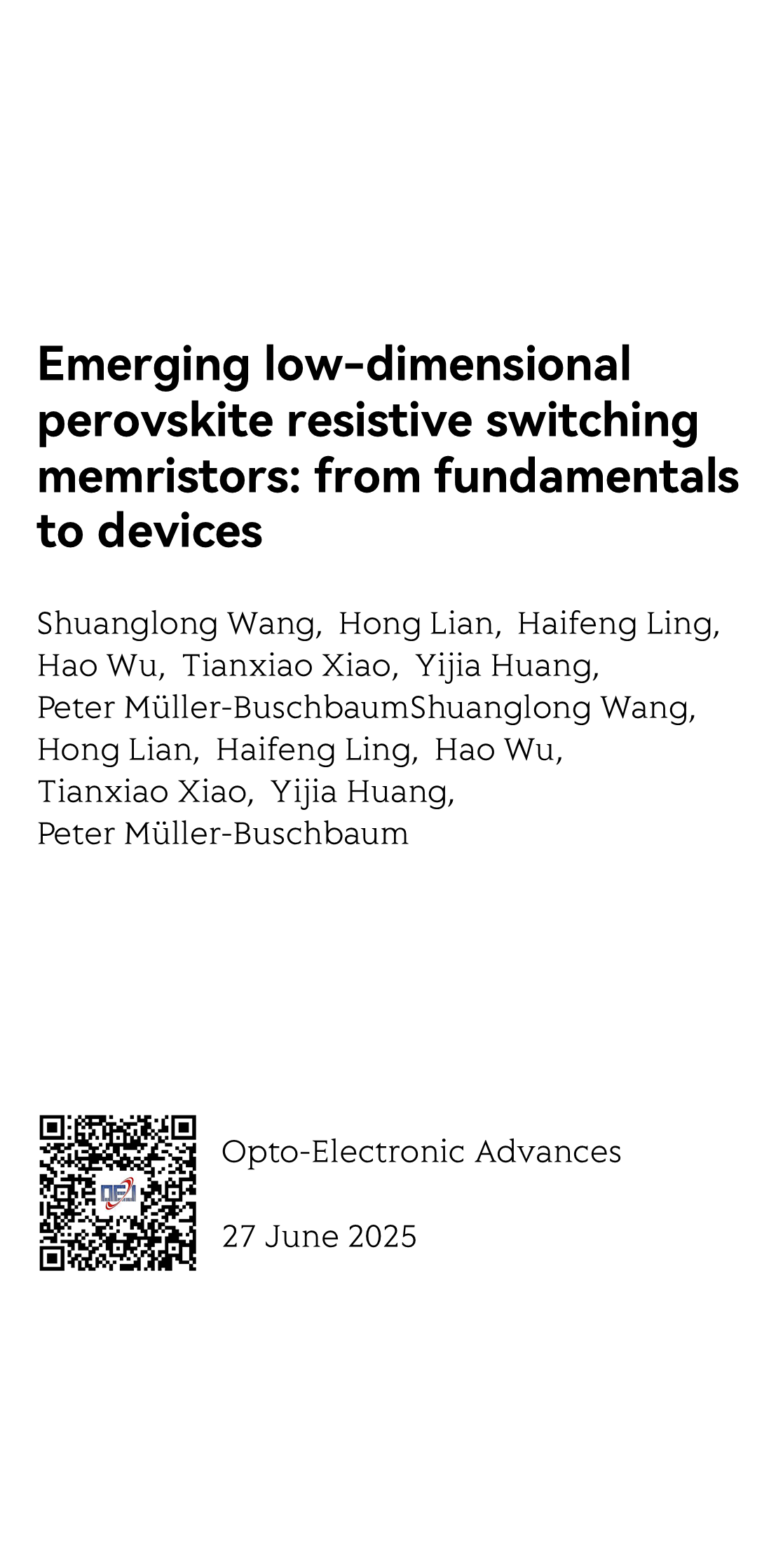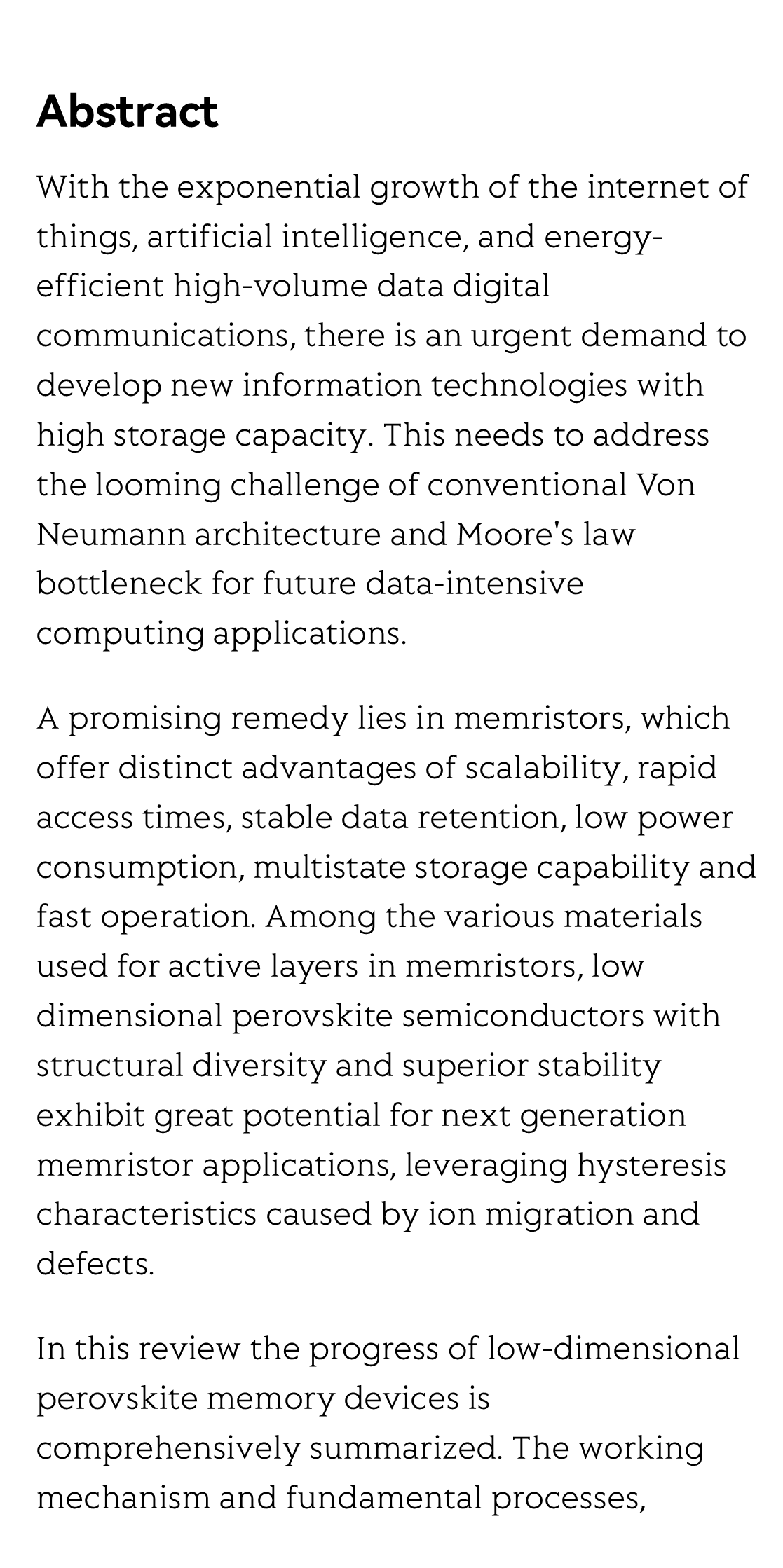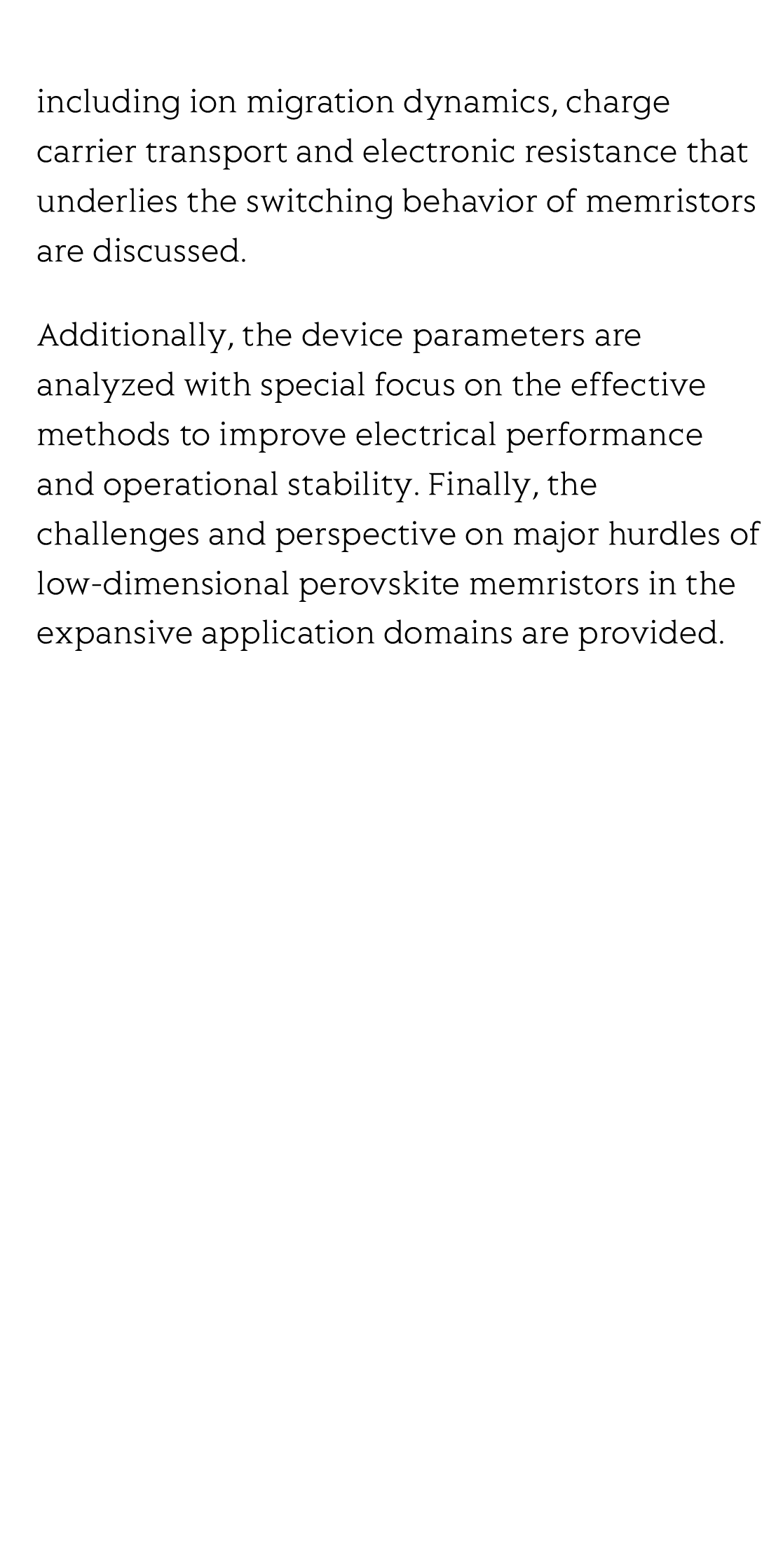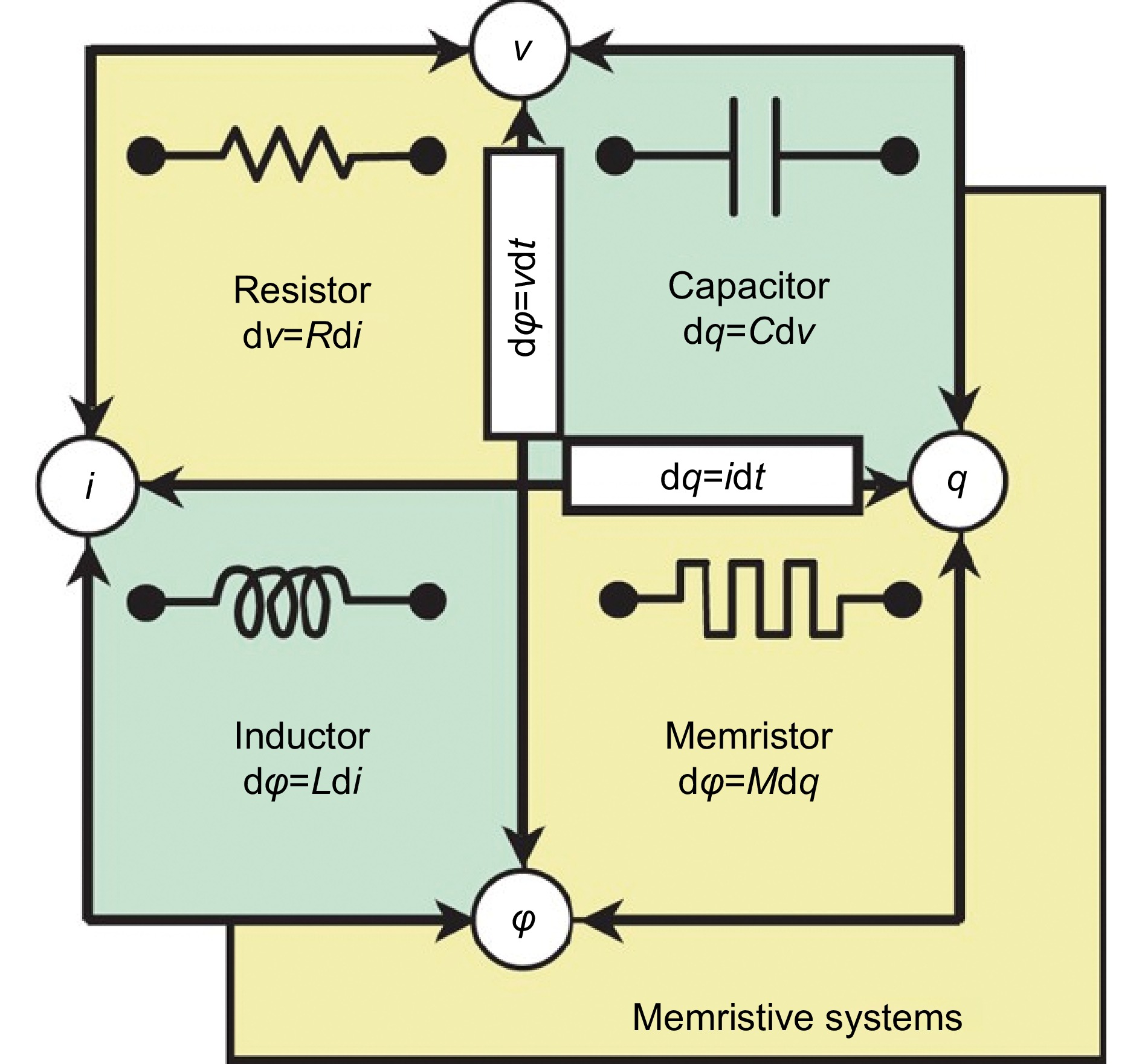(Peer-Reviewed) Emerging low-dimensional perovskite resistive switching memristors: from fundamentals to devices
Shuanglong Wang 王双龙 ¹, Hong Lian 廉鸿 ², Haifeng Ling 凌海峰 ³, Hao Wu 吴昊 ⁴, Tianxiao Xiao 肖天笑 ¹ ⁵ ⁶, Yijia Huang 黄奕嘉 ⁷, Peter Müller-Buschbaum ⁵
¹ Department of Electronic Engineering, The Chinese University of Hong Kong, New Territories, Hong Kong 999077, China
中国 香港 香港中文大学电子工程学系
² School of Microelectronics, Shanghai University, Shanghai 200444, China
中国 上海 上海大学微电子学院
³ State Key Laboratory of Organic Electronics and Information Displays & Institute of Advanced Materials (IAM), Nanjing University of Posts & Telecommunications (NJUPT), Nanjing 210023, China
中国 南京 南京邮电大学 有机电子与信息显示国家重点实验室和先进材料研究所
⁴ Max Planck Institute for Polymer Research, Ackermannweg 10, Mainz 55128, Germany
⁵ Technical University of Munich, TUM School of Natural Sciences, Department of Physics, Chair for Functional Materials, James-Franck-Str. 1, Garching 85748, Germany
⁶ Hong Kong Centre for Cerebro-Cardiovascular Health Engineering, Hong Kong Science Park, Hong Kong 999077, China
中国 香港 香港心脑血管健康工程研究中心
⁷ Laboratory of Micro-Nano Optics, School of Physics and Electronic Engineering, Sichuan Normal University, Chengdu 610101, China
中国 成都 四川师范大学物理与电子工程学院 微纳光学实验室
Opto-Electronic Advances
, 2025-06-27
Abstract
With the exponential growth of the internet of things, artificial intelligence, and energy-efficient high-volume data digital communications, there is an urgent demand to develop new information technologies with high storage capacity. This needs to address the looming challenge of conventional Von Neumann architecture and Moore's law bottleneck for future data-intensive computing applications.
A promising remedy lies in memristors, which offer distinct advantages of scalability, rapid access times, stable data retention, low power consumption, multistate storage capability and fast operation. Among the various materials used for active layers in memristors, low dimensional perovskite semiconductors with structural diversity and superior stability exhibit great potential for next generation memristor applications, leveraging hysteresis characteristics caused by ion migration and defects.
In this review the progress of low-dimensional perovskite memory devices is comprehensively summarized. The working mechanism and fundamental processes, including ion migration dynamics, charge carrier transport and electronic resistance that underlies the switching behavior of memristors are discussed.
Additionally, the device parameters are analyzed with special focus on the effective methods to improve electrical performance and operational stability. Finally, the challenges and perspective on major hurdles of low-dimensional perovskite memristors in the expansive application domains are provided.
Flicker minimization in power-saving displays enabled by measurement of difference in flexoelectric coefficients and displacement-current in positive dielectric anisotropy liquid crystals
Junho Jung, HaYoung Jung, GyuRi Choi, HanByeol Park, Sun-Mi Park, Ki-Sun Kwon, Heui-Seok Jin, Dong-Jin Lee, Hoon Jeong, JeongKi Park, Byeong Koo Kim, Seung Hee Lee, MinSu Kim
Opto-Electronic Advances
2025-09-25
Dual-frequency angular-multiplexed fringe projection profilometry with deep learning: breaking hardware limits for ultra-high-speed 3D imaging
Wenwu Chen, Yifan Liu, Shijie Feng, Wei Yin, Jiaming Qian, Yixuan Li, Hang Zhang, Maciej Trusiak, Malgorzata Kujawinska, Qian Chen, Chao Zuo
Opto-Electronic Advances
2025-09-25







